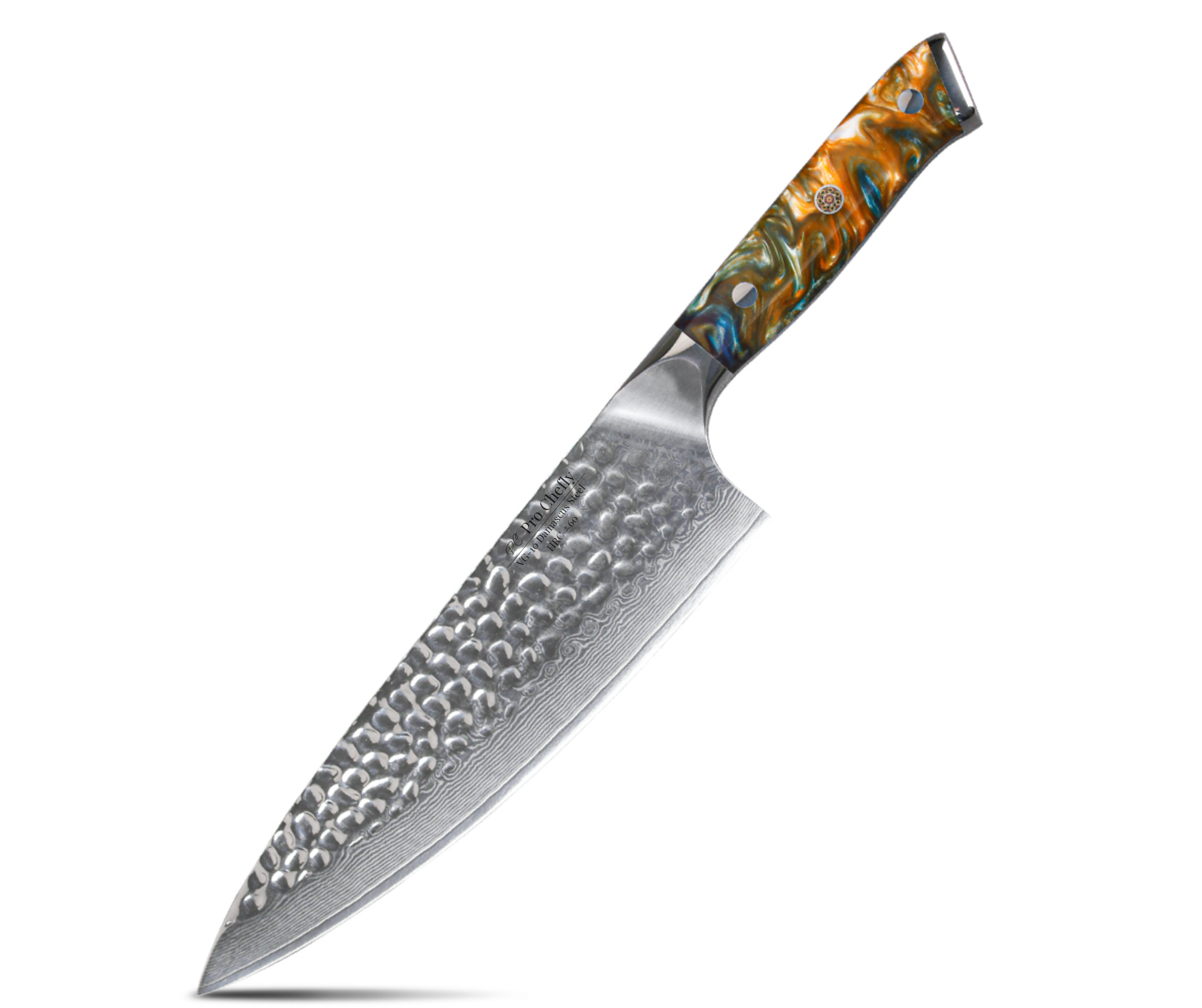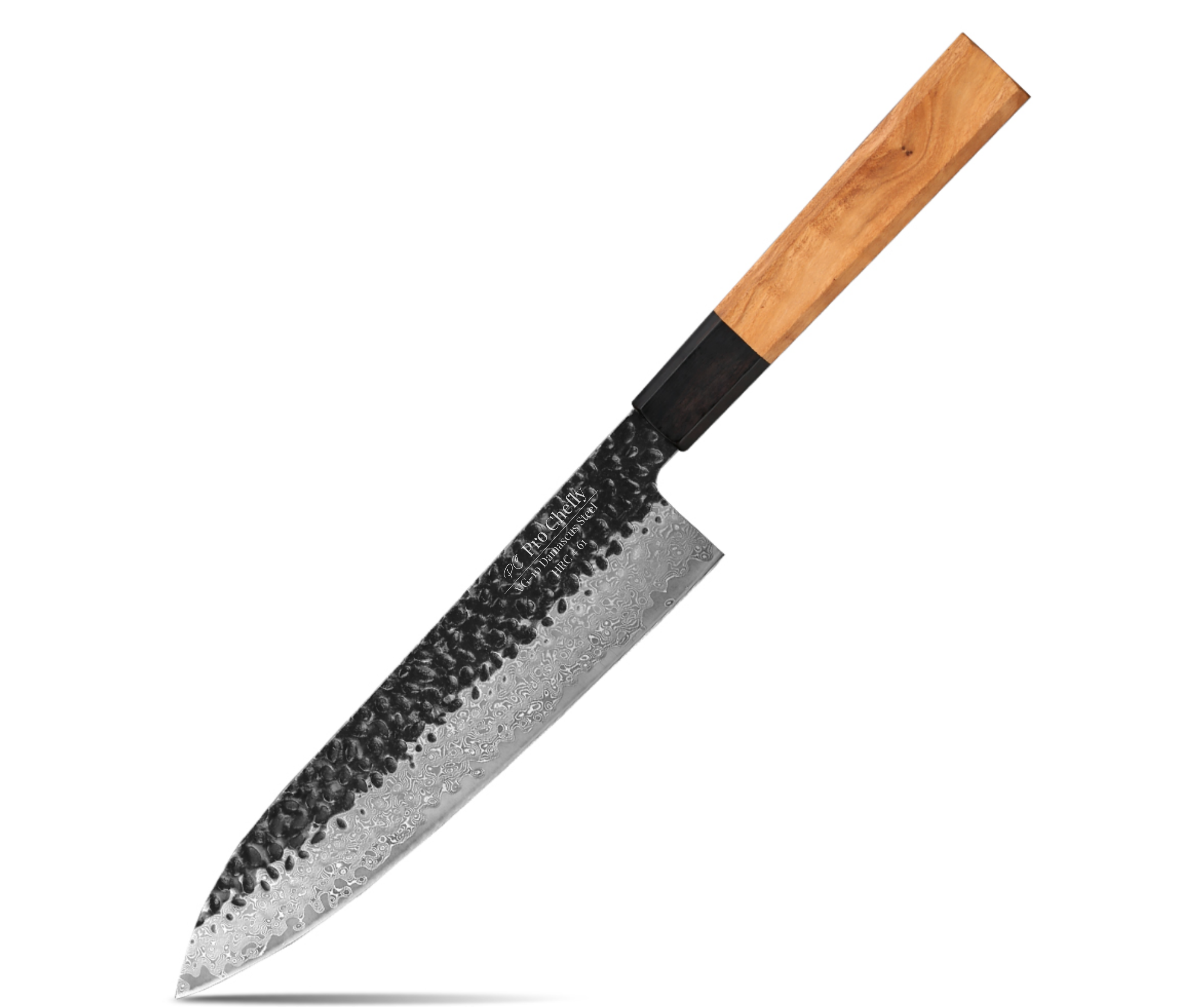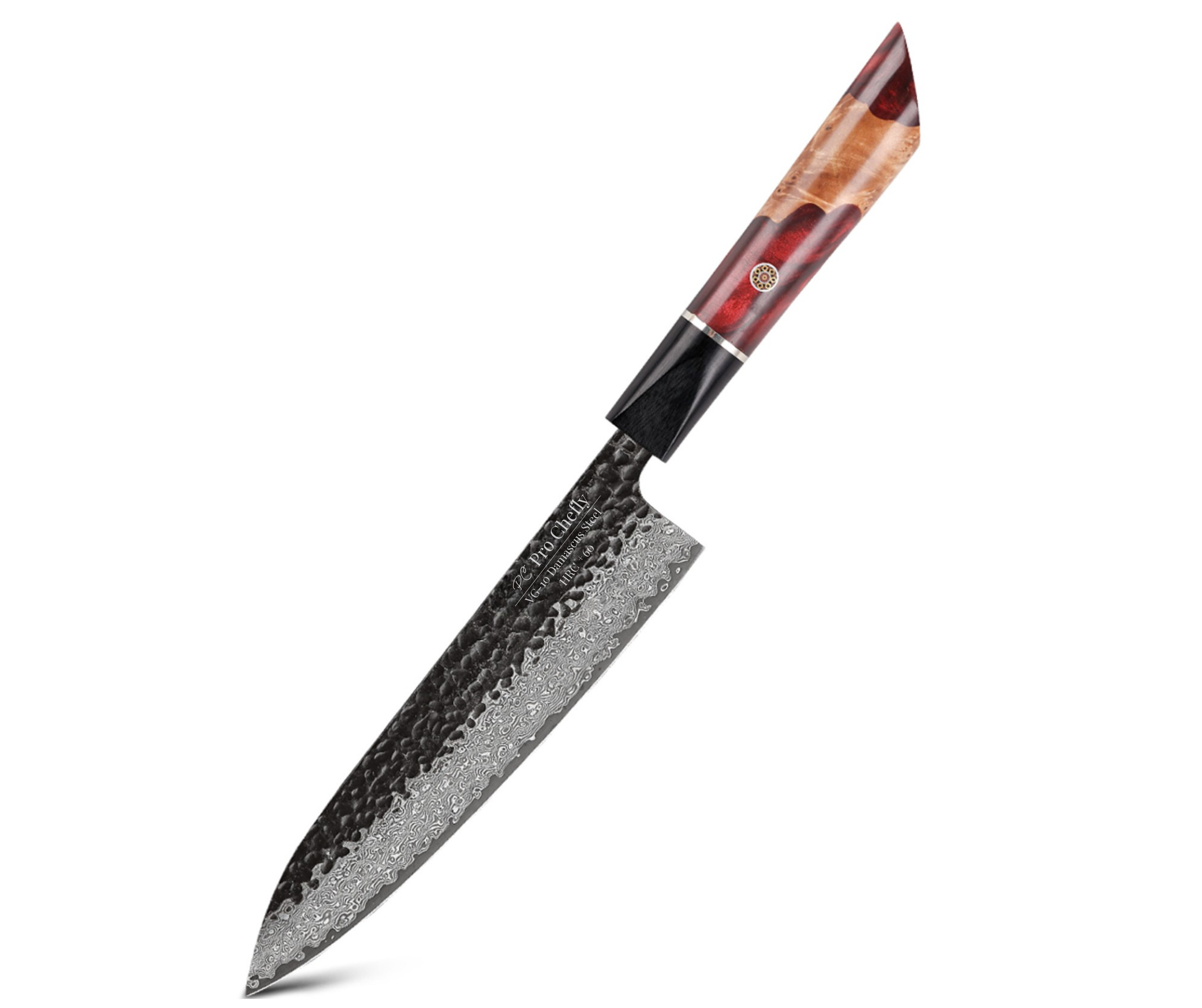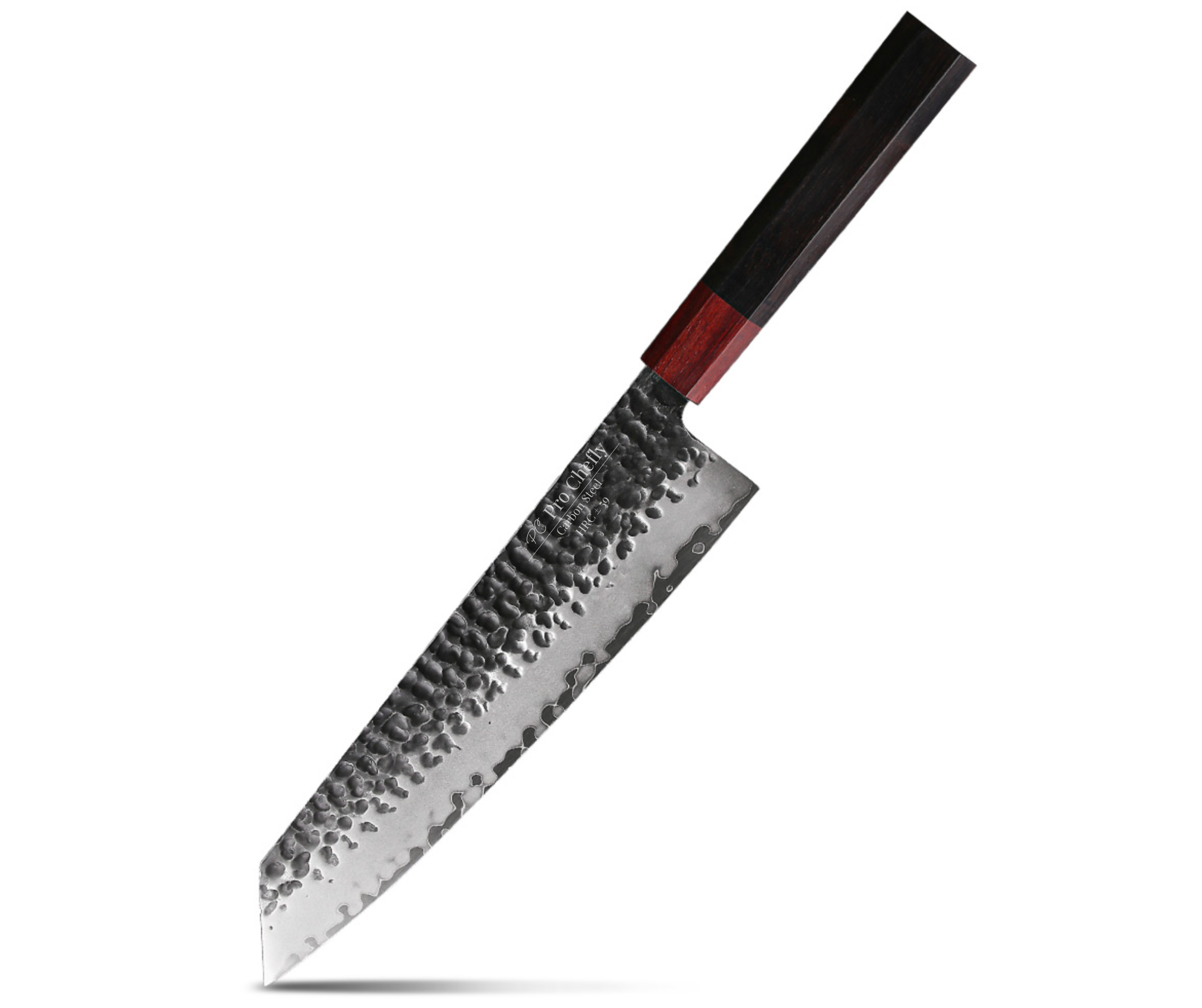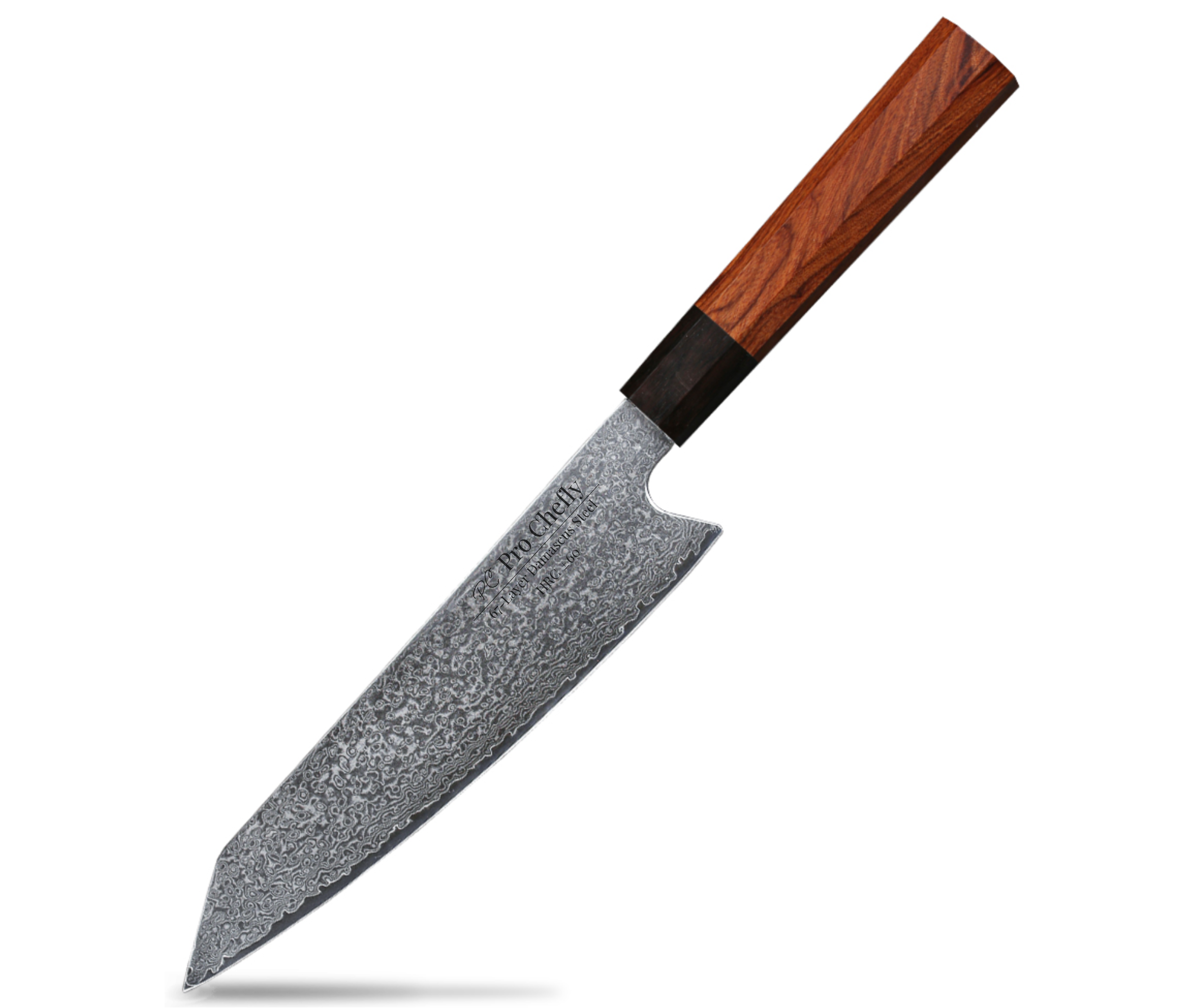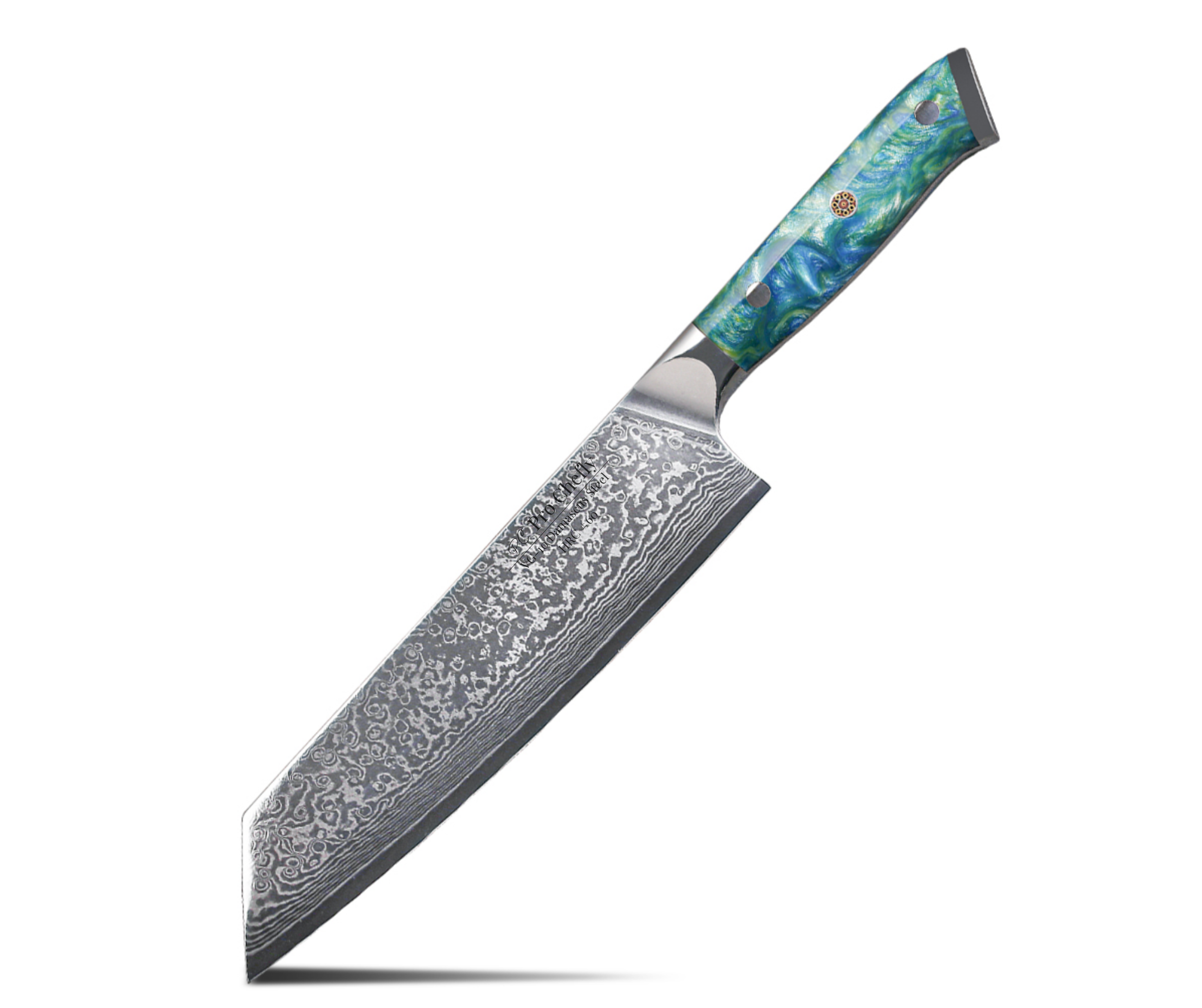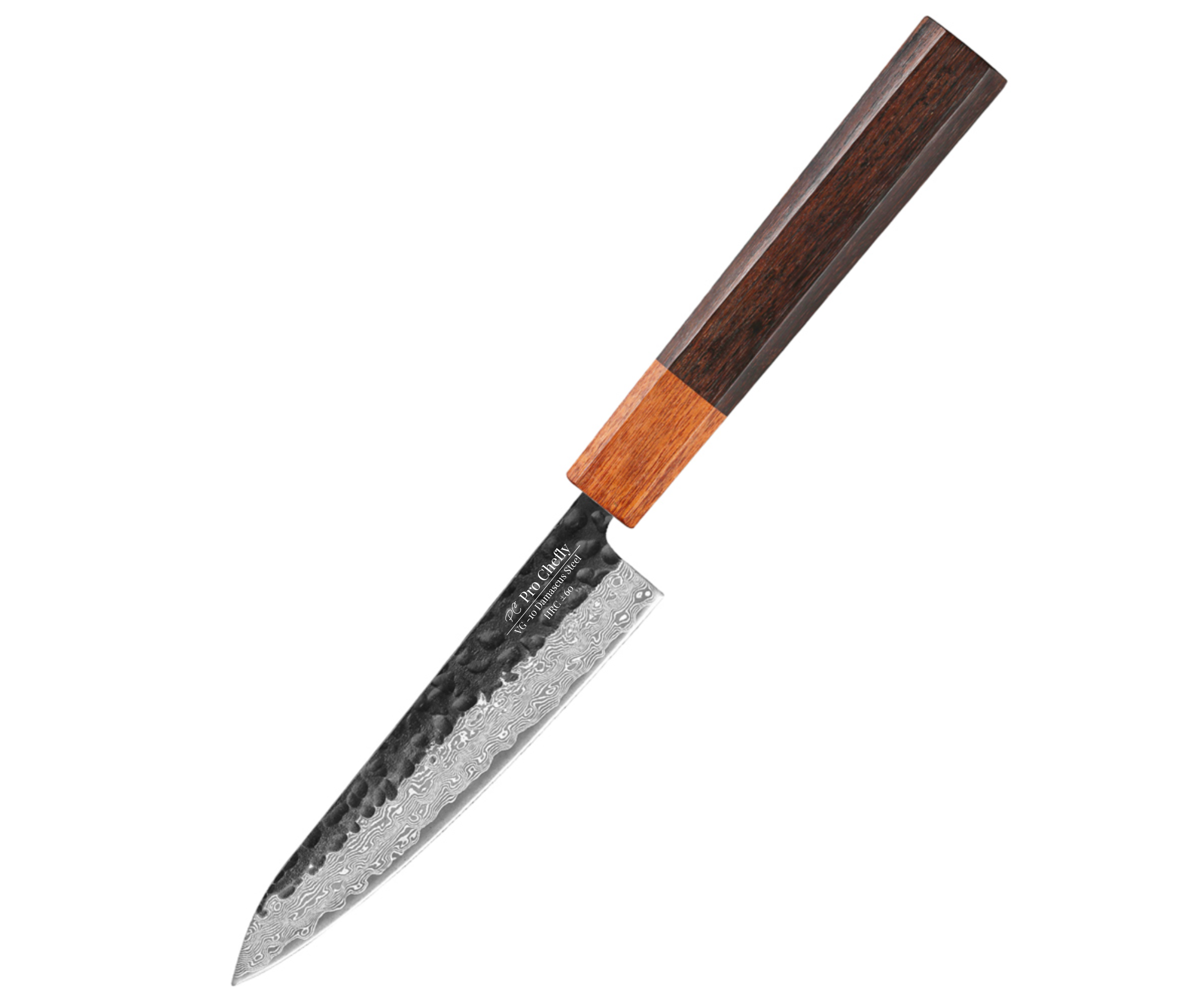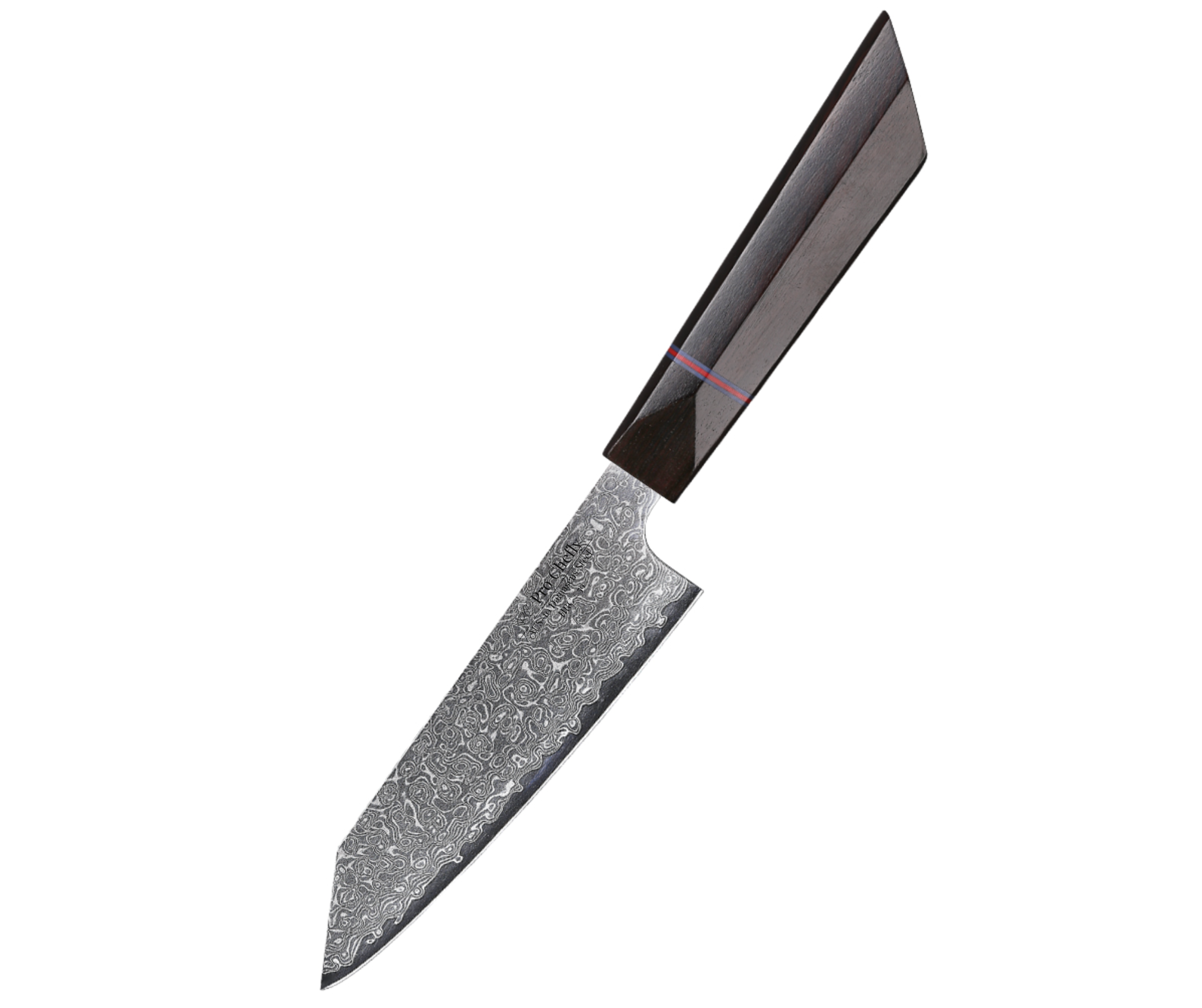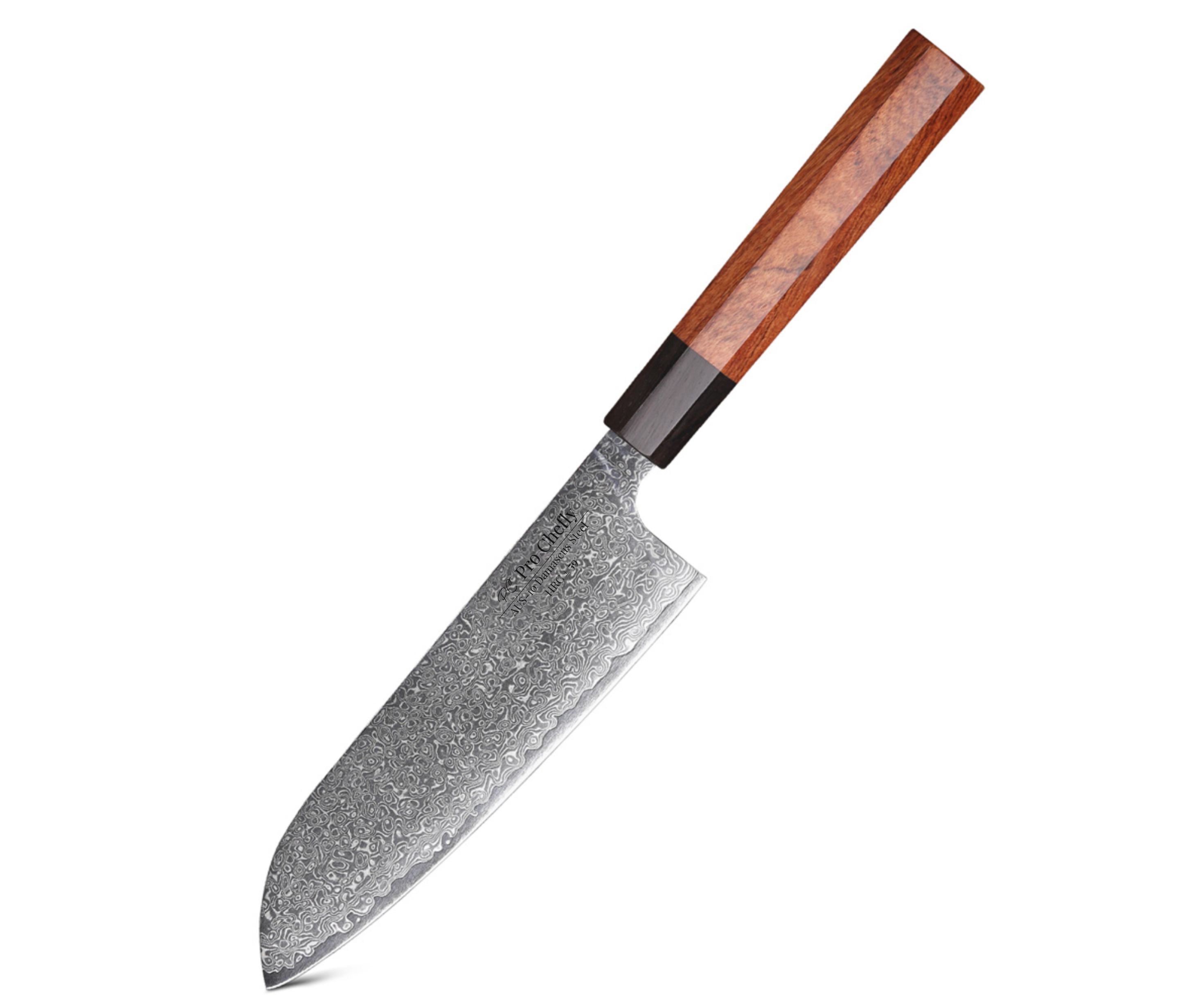Chef’s Overview
Dear Chefs, as carving season arrives—turkeys, roast chickens, autumn roasts—precision is everything. A clean slice can elevate the entire dish. But which blade delivers sharper precision: the Gyuto or the Chef knife? Today, we’re diving deep into their designs, cutting dynamics, and how each performs when it matters most at the carving board.

Anatomy of Sharpness – What Makes a Blade Precise
Sharpness is more than how thin the blade is—it’s edge geometry, steel quality, and bevel consistency. Gyuto knives often feature thinner bevels and Japanese steel like VG-10, which allow micro-cuts that feel razorlike. Chef knives lean heavier, with more robust edges optimized for power and durability. As we discussed in Gyuto vs Chef Knife – Cutting Through the Myths This Halloween, the thinner profile gives the Gyuto an advantage in finesse.
Edge Geometry and Bevel Thickness
Gyuto blades tend to carry more aggressive edge angles (e.g. 15° per side) and finer microbevels, giving them a hair-splitting tendency. Chef knives often use 20° per side or hybrid bevels for strength under heavier use. During steak or poultry carving, that difference shows in how the blade “glides” rather than forces through fibers.
Steel and Heat Treatment
Steel matters. A Gyuto crafted from high-quality VG-10 Damascus or AUS-10 steel can maintain extremely acute edges while resisting chipping—making it ideal for thin precision slices. Meanwhile, a Chef knife built with high Rockwell rating and tougher steel will handle bones and heavier cuts with less risk of damage. Check out Why Chefs Choose Damascus Steel Knives for Precision for more on how steel architecture influences performance.
Carving Season in Practice – Real Cuts, Real Tests
Let’s test both knives in a carving scenario: roast chicken, turkey breast, and beef tenderloin.
Roast Chicken & Turkey Breast
For skin-on turkey breast, the Gyuto excels in delicate slices—thin, uniform, minimal tearing. Use the 8" VG-10 Damascus Gyuto to glide between muscle layers. But when cutting through the rib cage or denser joints, a 8" VG-10 Damascus Chef Knife may offer the leverage and weight needed to push through without hesitation.
Beef Tenderloin & Prime Rib
When carving prime rib, the Gyuto’s precise edge helps you slice extremely thin, beautiful medallions. But if the roast has a dense fat cap or connective tissue, the Chef knife’s sturdier spine helps you get through without forced pushes. The 8.5" VG-10 Damascus Kiritsuke Knife is another interesting hybrid tool for this job.
Which Blade Wins for Sharp Precision on Carving Tasks?
In terms of pure razor-like slicing, the Gyuto often holds the edge. When you want cuts so clean they glisten, few blades match its finesse. But the Chef knife offers more forgiveness on tough angles, joints, and bigger roasts. For many chefs, the smart play is to keep both on hand—Gyuto for finish cuts, Chef knife for strength. As explored in Western vs Japanese Chef Knives: Which Is Better for You, each has a role in the kitchen.
Pro Chefly Picks for Carving Season
Pair your carving sessions with these Pro Chefly favorites:
-
8" VG-10 Damascus Gyuto for thin precision slices
-
8" VG-10 Damascus Chef Knife for heavier cuts and joints
-
Use the 7" VG-10 Damascus Nakiri Knife for slicing vegetables that accompany your roasts
-
Keep the 5" VG-10 Damascus Petty Knife nearby for trimming garnishes and fat
The Final Slice – Precision That Speaks Volumes
Dear Chefs, carving is where form meets function—your blade’s precision becomes the signature of your dish. Whether you favor the razor edge of a Gyuto or the strength of a Chef knife, what matters most is how confidently you trust the blade in your hand. This season, let your cuts show your craftsmanship. After all, great meals deserve great presentation.
Knife Collections
Shop the latest in Pro Chefly Damascus Knives
Chef's Notes
Stay up to date with the latest kitchen stories and recipes

- December 05, 2025
Dear Chefs, the holidays deserve a dish that feels slow, soulful, and unforgettable — and few things capture that spirit...

- November 30, 2025
Dear Chefs, there is something unmistakably comforting about bread pudding in November — the way the custard soaks into the...

- November 25, 2025
Dear Chefs, there is something special about roasted carrots in the fall — the way they caramelize, the way their...

- November 20, 2025
Dear Chefs, there is something magical about fall stuffing, especially when pumpkin and sage join the party. The aroma alone...

- November 15, 2025
Dear Chefs, November has a rhythm of its own — a slower pace, a softer light, and a craving for...

- October 31, 2025
Dear Chefs, fall baking is a ritual — the scent of cinnamon in the air, pecans roasting low and slow,...
- Choosing a selection results in a full page refresh.
- Opens in a new window.
